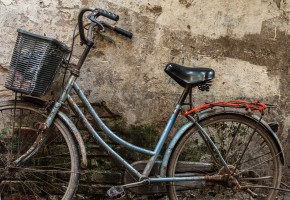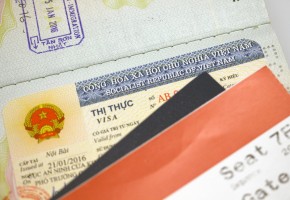
Money and Costs
Currency
The Vietnamese Dong (VND) is Vietnam’s official currency. Unofficially, the US dollar is widely accepted as a second currency, especially in major towns and cities, and prices are often quoted in dollars.
As recently as 6 or 7 years ago, the lowest denomination note was 200 VND, but inflation has rendered that note obsolete.
Notes now start from 500 VDN (which equates to a mere 0.21 USD), and they increase to denominations of 1000, 2000, 5000, 10,000, 20,000, 50,000, 100,000, 200,000 and 500,000.
At today’s rates (as of June 2019), a 500,000 VND note will only set you back about $21.50 USD, making you a Dong millionaire for under $45 U.S.
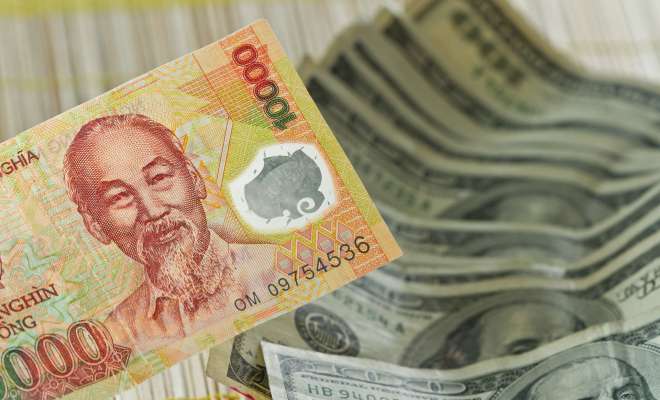
We recommend that you keep some smaller VND notes on hand for smaller purchases as well as taxi fares.
The vendors and taxi drivers often don’t have the correct change if you pay with a large note, and you risk paying more than you bargained for, or having to wait while they run around to the shop next door for change. Vendors will also quite often peer into your wallet as you’re paying to point out (and occasionally actually grab) some of the smaller notes — best to keep your wallet private.
In December 2003, the State Bank of Vietnam started issuing coins in denominations of 200, 500, 1,000, 2,000, and 5,000 Dong in either nickel clad steel or brass clad steel.
The coins weren’t popular with the locals, the vendors often refused to accept the coins as payment for purchases, and some banks refused coin cash deposits or the cashing in of large numbers of coins. Inevitably, production and circulation of the coins stopped in 2011. You still sometimes see them, but they are curiosities, not to be treated as real money.
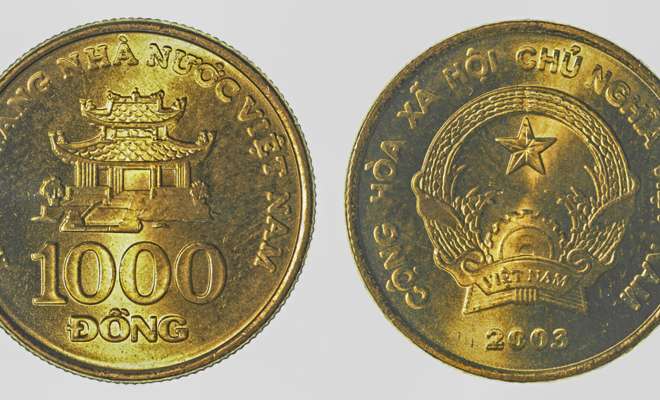
U.S. dollars, preferably crisp clean bills, are widely accepted among major shops and restaurants in major centers, although it is actually “illegal” to advertise prices, or ask for payment in currency other than VND.
Shop and restaurant owners in rural areas will likely not willingly accept payment in anything but Vietnam Dong, so make sure to carry Dong when you travel outside the urban areas. At the time of this writing (June 2019), the value of the Dong is about 23,300 Dong to one U.S. dollar, but we recommend you check Vietcombank’s website here for the current exchange rate.
While paying for purchases with U.S. dollars may be more convenient for you, the downside is that prices will be converted from Dong at the vendor’s “chosen” exchange rate, which may or may not be close to the official exchange rate, and will be rounded up to the nearest USD, almost assuredly making it more expensive than the actual cost in Dong. It’s best to avoid unpleasant arguments by ensuring you have enough of the national currency with you.
Exchanging money in Vietnam, Dong for dollar, Euro, etc., or vice versa, is officially illegal, but widely overlooked by the powers that be, and welcomed by black market traders and gold/jewelry shop owners. Often, the exchange rate given by the jewelry shops is close to being on par with the bank rate; however, the black market exchange rates may not be to your advantage. Check the rates before you change your hard-earned dollars for Dong. You might also be confronted by people on the street offering to exchange money for a better rate than the official one. As the old saying goes, “if it sounds too good to be true, it usually is”. The risk runs high of you being short-changed, or of receiving fake notes or being tricked with the domination of notes, so … smile and politely wave these street exchangers off.
ATMs
ATMs for both local and international banks are readily available in the bigger centers across the country, most certainly at the major airports as well as around city streets in the popular tourist areas, but not so easy to find in smaller, rural or remote areas. Vietcombank has by far the most ATMs in the country, followed by other banks such as ANZ, HSBC and Citibank. We suggest you confirm with your bank back home whether your card will work in Vietnam or not.
While most ATMs accept Plus (Visa) debit and credit cards, Cirrus and Maestro (MasterCard) are less commonly accepted. ATMs in your own countries probably use four-digit PINs, but in Vietnam, six-digit PINs are the norm. You might get around this by adding two zeros in front, but just to be on the safe side, it’s best to ask your bank about this before you come. It is also a good idea to inform your bank of your Vietnam travels so they won’t flag your transactions as suspicious and freeze your card.

ATM withdrawal limits vary from city to city and from bank to bank. ATMs at some major banks in major centers will sometimes dispense up to VND 10 million per transaction, but the norm is about VND 4 million; outside the city, however, it’s rare to find ATMs that dispense more than VND 2 million per transaction. Don’t panic, though, because you can generally make repeated withdrawals of VND 2 or 4 or whatever million, as long as you stay within the bank’s daily withdrawal limit.
Of course, you will be charged a fee to withdraw money from ATMs, and fees vary from bank to bank, but you should expect to pay between 20,000 to 50,000 Dong (or perhaps more!) per transaction, and you might also be charged by your home bank for foreign transaction fees. Therefore, logically, making fewer, larger withdrawals is often cheaper than making more frequent small ones.
It can sometimes be to your advantage to use the ATMs at some of the bigger banks such as ANZ, Citibank or HSBC, even if you aren’t a customer, as they have much larger per transaction withdrawal limits than other banks. Keep in mind, however, that their per transaction fees are also on the high side.
You can only take out Vietnamese Dong from Vietnamese ATMs, but you might be asked if you’d like to be charged in your home currency. Never accept this “offer”, as it is generally an exchange rate rip-off with the local withdrawal exchange rate being substantially marked up by the ATM. Always opt to be charged in the local currency instead.
You should always double check your banknotes after an ATM withdrawal (as well as when you are given change for a purchase) to make sure none of them are damaged, as most Vietnamese vendors will scrutinize your notes before accepting them, and they will refuse any that are torn or missing a corner. Should you end up with a damaged note, bring it, along with your passport, to the nearest bank to exchange it for another.
Credit cards
Visa, Mastercard and JCB (Japanese) are now widely accepted in Vietnam, especially in typically touristy or expat areas. Of course, a commission charge is standard (usually 3%, Amex requiring 4%). Higher end hotels and restaurants sometimes don’t add the additional charge, but it’s best to ask. For a cash advance on one of the above cards, you can visit most Vietcombank branches in big cities, and some foreign banks in Hanoi or HCM.
While credit cards are generally accepted in the larger hotels and restaurants, Vietnam remains very much a cash-based society, so small, more rural businesses and taxis will emphatically not accept them. Again, we recommend that you take along sufficient Vietnamese Dong when you travel outside the city centers.
Costs
Accommodation
Near the top of the world’s economic growth rankings, enterprising Vietnam has maintained its popularity with foreign travelers looking for a relatively inexpensive holiday. By international standards, the price of travel in Vietnam is still cheap, but of course, your budget is dependent on your choices.
Boasting a wide range of good (and ever increasing) accommodation, you can choose from simple, basic hotels and hostels for an astounding $5 – $10 per night, to mid-range hotels from $25 – $70 per night and luxury hotels in the cities, which will set you back anywhere from $100 or more a night. Home stays are sprouting up everywhere in small towns and more remote areas, and they tend to cost anywhere from $4 to $10 per night.

Food & drinks
One of the highlights of travelling to Vietnam is without doubt the food, with a wide variety of places to sample some of the finest Vietnamese (and plenty of Western) cuisine, from street food stalls to cafes and casual restaurants to fine dining establishments. The prices differ vastly between these venues, of course, so depending on the atmosphere and level of flash you’re seeking, you can definitely find something to fit your budget.

A hearty and delicious street-side bowl of ‘pho’ (beef or chicken noddle soup) or a made-to-order ‘banh mi’ (baguette sandwich) might cost anywhere from $1.50 to $3.00; a slightly higher price of $4 to $7 will get you a big serving of either local food or Western food at a nice place with a nice ambience.
The touristy areas are chock-a-block full of Western style restaurants, but these restaurants are not only often dramatically more expensive than their local counterparts, but they are also mostly a poor reflection on Western cuisine. Sticking to local restaurants that serve up Vietnamese food will ensure more money in your pocket and a much more rewarding dining experience.
There is no lack of higher end restaurants in the urban centers, and the prices charged at these establishments are just slightly lower or nearly on par with comparable restaurants in Western countries.
As varied as the choices of food and restaurants are the choices of drinks in this splendid country. Vietnam produces and consumes a lot of coffee, and the range and number of cafes is mind-boggling. The price of a ‘café sua da’ (iced coffee with sweet milk, a Vietnamese specialty) can be anywhere from $0.75 to $1.50, so inexpensive you’ll want to have a second! Many coffee houses offer cappuccinos and lattes at an affordable $3 – $4.
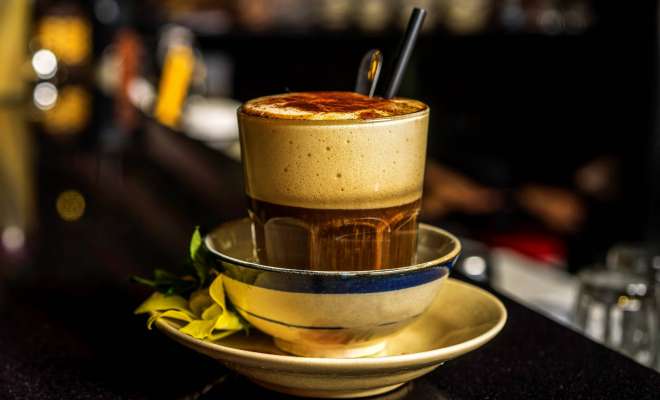
Bia hoi, a local draught beer is by far the best value of alcoholic drinks at a mere 20 to 50 cents! Cocktails are available at most restaurants and bars, of course, and there are now some fancy cocktail bars sprouting up everywhere. Cocktails will generally set you back anywhere from $2 to $6, but can be as high as $8 – $10 in the more trendy establishments and hotels.
In keeping with the adulation of Western ways, wine has somewhat recently become more popular amongst locals, and appreciated amongst expats. Imported wines will undoubtedly be pricier than Vietnam’s own Dalat wine, anywhere between $4 – $12 per glass compared to $1.50 – $2.50 per glass, but the difference in price definitely reflects the difference in quality and taste. Enough said.
Transportation
Getting around in Vietnam means choosing from a diversity of modes of transportation including cyclos, bicycles, motorbikes, cars, taxis, buses, boats, trains and airplanes. Some advance planning will help you to choose how to travel, as well as help you to stay within your budget.

Flights within the country can be reasonably inexpensive if you book far enough ahead or luck out on a few remaining seats. There are a few low cost carriers that can take you from one end of the country to the other for as little as $100 return. The airlines often run promotions so you can shop for the best price. Click here to see more about airlines in Vietnam.
If you have plenty of time, and want to get a greater insight into Vietnam’s landscapes and people, the train is a popular and inexpensive means of transportation. A north-to-south, 1726-km, 34-hour train ride in an air conditioned soft seat will cost about $40 – $60 one way, depending on the type of train. Getting a soft bed in a berth for the same trip will set you back about $70 – $100. For more information on trains in Vietnam, check out Seat 61 for Vietnam.
Various types of boats and ferries operate throughout the country, and the range of prices is just as varied. Check with your hotel, do your research, or ask around for the price and level of service that fits your budget and taste.
Buses are plentiful and cheap in Vietnam, but have, on occasion, not always been so reliable or safe, on the road break-downs and on the bus theft being two of the most commonly reported issues.
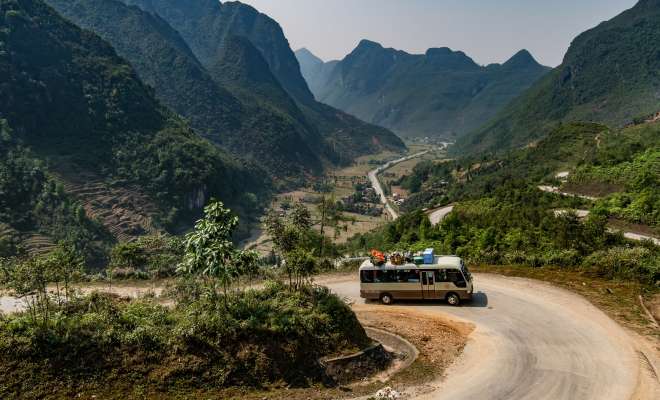
Buses are plentiful but choose carefully
The prognosis is not all bad, though. The plethora of bus operators mostly charge similarly low prices for the north-south line, about $20 – $25, and another advantage to these buses, apart from having time to observe and appreciate the breathtaking scenery, is that you can choose to hop off/hop on the bus to visit cities or towns along the way. Just remember to book your seat for the next leg of your journey to avoid being disappointed.
These days, new lines of ‘VIP’ and ‘Limousine’ buses and mini-vans are flourishing, so the bus option has become a much more enjoyable one. These (usually) 9-20 passenger vehicles are spacious, clean, air conditioned, and affordable. For example, the journey from Hanoi to our favorite place in Vietnam, Ha Giang, a 6 to 7-hour trip, overnight or by day, is about $10-$12. Sleeper buses, also clean and air conditioned, transport passengers to and from place to place at reasonable prices.
A much more hassle-free, quicker, nicer alternative to travel from point A to point B is with car and driver. Prices vary from company to company, and from driver to driver, but generally they can be hired at a very reasonable price, especially if two or more people are sharing the cost. Prices depend on distance traveled, time required (by the day vs by the hour), difficulty of terrain in which they will be driving, etc.
We at Other Path Travel would be happy to arrange this service for you at the most reasonable price possible.
Inner-city transportation is varied—bus, xe om (motorbike taxi), taxi, and electric cars – and all quite reasonably priced. Bus fares run at about 30 to 50 cents (7,000 – 9,000 Dong) per trip. Xe om fares have to be negotiated, but generally should cost between 30-50 cents per km (about 6,000 – 10,000 Dong per km); remember to always negotiate and agree on the fare before embarking.
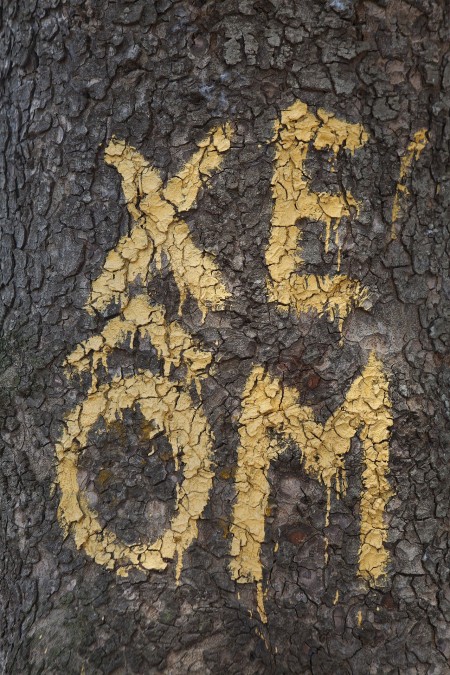
Electric cars are great for inner-city tours, and they are great as a way to help you orient yourself when you first arrive. These seven-seater, open-air cars are not only environmentally friendly, but also fun and inexpensive. If you hop on a public car, the price is only about $0.70 to $1 for a 45-minute ride around the city, and if you want to hire a private electric car, it should only set you back somewhere between $9 for 35 minutes to $13 for an hour.
Taxi fares are incredibly cheap compared to taxis ‘back home’, but make sure the taxi you get into is running a meter, as opposed to a verbal price. The starting meter price, depending on the taxi company, should be somewhere between 30 – 50 cents (7,000 -12,000 Dong), and the rest of the trip charge should be about 45 – 65 cents (10,000 – 15,000 Dong) per km.

Metered taxis are a wise choice
Renting or buying a motorbike
Getting around on your own on a motorbike is a popular alternative, especially for out-of-city travel. If you choose to rent a motorbike, we advise you to do so from a reputable, reliable company. There are plenty of scammers out there trying to make a buck from unsuspecting, trusting visitors – be smart, be aware of the possible scams that might occur. See our Safety, scams, traveling solo section for more information on scams.

Out of city motorbike travel
To avoid the possible hassles, we would be happy to steer our customers in the right direction for good companies to trust, as well as arrange the rentals for you.
Rental costs will depend on the type of motorbike you want, and the duration of your rental contract. The cost should range from about $10 per day for, say, a Honda Blade or Honda Dream (110 cc bike), to about $20 a day for a 150 cc bike, to about $35 per day for a bigger 250 cc bike; a decent discount is usually negotiable if you rent the bike for a week or more.
Buying a used motorbike can be a less expensive (but of course, more troublesome) option to your motorbike needs. You will have no difficulty finding a second-hand low-end bike to buy, sometimes for as little as $200, but without a doubt, you will, likely very early into your trip, have to dish out some money on maintenance, causing you not only unnecessary nuisance, but also extra costs. And, you will then be stuck, at the end of your trip, finding a new buyer on which to unload your motorbike.
An alternative to this is to buy a second-hand, well maintained bike from a reputable seller who is in the business of selling the bike, and then buying it back from you at the end of the trip. There will, of course, be a slight difference between the money handed over to the seller and the money returned to you, but the difference is generally the same or less than what you’d pay for the rental of a crappy bike.
You can also buy a brand new bike from one of these safe, credited sellers, who will buy it back from you when you’re done traveling. The price of the bike, reasonably, depends on the bike you choose. Do your research before you come.



